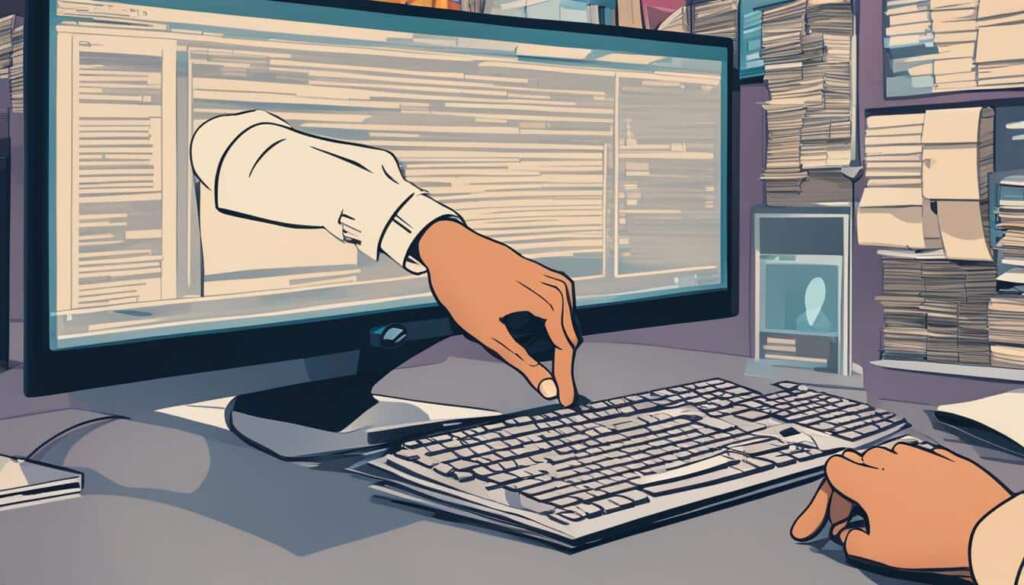Table of Contents
No matter how large a hard drive or solid-state drive you have in your PC or laptop, there will come a time when you run out of space. To reclaim storage space on your Windows PC or laptop, follow these eight tips:
Deleting unnecessary downloads is a simple yet effective way to free up space and maintain your computer’s efficiency. In this comprehensive guide, we will walk you through different methods to clear those pesky downloads from your PC, ensuring optimal performance.
From utilizing built-in utilities to identifying and removing large files, we’ll cover all the necessary steps to help you regain valuable disk space. With these tips, you’ll be able to declutter your system, improve its speed, and ensure a seamless computing experience.
How to Use Disk Cleanup to Delete Downloads on PC
Disk Cleanup is a built-in utility in Windows that allows you to efficiently delete unnecessary files and free up valuable disk space on your PC. By regularly performing disk cleanup, you can optimize your computer’s performance and ensure smooth operation.
To use Disk Cleanup effectively, follow these steps:
- Open the Start menu and search for “Disk Cleanup”.
- Click on the Disk Cleanup app in the search results to launch it.
- Choose the disk drive you want to clean up from the dropdown menu.
- Select the types of files you want to delete. To delete downloads specifically, check the “Downloads” option.
- Click on the “OK” button to initiate the cleanup process.
- Review the list of files that will be deleted and click “Delete Files” to confirm.
- Wait for the cleanup process to complete. Depending on the amount of data being deleted, this may take some time.
- Once the cleanup is finished, you will free up disk space by deleting unnecessary downloads and other files.
Regularly using Disk Cleanup helps you maintain a clutter-free storage system and ensures optimal performance of your PC. By deleting unused downloads, you can free up disk space and make room for more important files or applications.
“Disk Cleanup is an essential tool for maintaining a clean and efficient PC. By regularly deleting unnecessary downloads, you can free up disk space and improve the overall performance of your computer.” – Microsoft Support
How to Use Windows Storage Sense to Manage Disk Space
Windows Storage Sense is a powerful feature available in Windows 10 and 11 that helps you effectively manage your disk space by automatically deleting unnecessary files. By utilizing Windows Storage Sense, you can maintain the efficiency and performance of your PC while ensuring you have enough space for your important files and applications.
To utilize Windows Storage Sense and delete unnecessary downloads on your PC, follow these simple steps:
- Open the “Settings” app on your Windows PC. You can do this by clicking the Start button, selecting the “Settings” icon (shaped like a gear), and clicking on it.
- In the “Settings” app, click on the “System” category.
- In the left sidebar, select “Storage”.
- Within the “Storage” settings, you will see the “Storage Sense” option. Click on it.
- Toggle the switch next to “Storage Sense” to turn it on if it’s disabled.
- Under the “Change how we free up space automatically” section, you can customize the settings according to your preferences. This includes options such as deleting temporary files, emptying the recycle bin, and automatically deleting files in the Downloads folder that haven’t been modified for a specific period.
- Once you have customized the settings, close the “Settings” app, and Windows Storage Sense will automatically delete unnecessary files, including old downloads, based on the parameters you have set.
With Windows Storage Sense, you can effortlessly free up disk space on your PC without manually deleting files or worrying about cluttered downloads folders. It provides a convenient and automated solution to manage your disk space, allowing you to focus on what matters most on your computer.
Take advantage of Windows Storage Sense and experience a streamlined and clutter-free PC environment.
“Windows Storage Sense offers a seamless way to manage your disk space by automatically deleting unnecessary files. It saves your time and ensures optimal performance.”
| Benefits of Windows Storage Sense | How it Works |
|---|---|
| Efficient disk space management | Automatically deletes unnecessary files |
| Improved PC performance | Frees up disk space to enhance speed and responsiveness |
| Saves time and effort | Eliminates the need for manual file deletion |
| Customizable settings | Allows you to personalize the storage cleaning process |
How to Identify and Delete Large Files to Free Up Disk Space
If you find your PC’s storage space dwindling, it’s essential to identify and delete large files that may be taking up valuable disk space. By following these simple steps, you can effectively free up disk space:
1. Search for large files: Start by using the built-in search function on your PC to look for files above a certain size threshold. This can typically be done by specifying a file size in the search parameters or using keywords such as “large files” or “size: >100MB” in the search bar.
2. Sort files by size: Once the search results are displayed, sort the files by size from largest to smallest. This will enable you to easily identify the largest files consuming the most disk space.
3. Review and delete: Carefully review the identified large files and determine whether they are still necessary. For example, you may find duplicate files, outdated installations, or media files that are rarely accessed. Delete these files to free up disk space. However, exercise caution when deleting files and ensure that you do not delete any important system files.
4. Empty the Recycle Bin: After deleting the large files, remember to empty your Recycle Bin to permanently remove them from your storage. This step is crucial as the files continue to occupy disk space until they are permanently deleted.
By regularly identifying and deleting large files, you can maintain optimal disk space on your PC and ensure smooth system performance.
FAQ
How can I delete downloads on my PC to free up space?
To delete downloads on your PC and free up space, you can use the Disk Cleanup utility in Windows. This built-in tool allows you to remove unnecessary files and reclaim disk space.
How do I use Disk Cleanup to delete downloads on my PC?
To use Disk Cleanup effectively, follow these steps:
1. Press the Windows key on your keyboard, type “Disk Cleanup,” and select the Disk Cleanup app from the search results.
2. Choose the drive you want to clean up from the drop-down menu.
3. Click on “OK” to start the scan.
4. Once the scan is complete, you’ll see a list of files that can be deleted. Select the “Downloads” option.
5. Click on “OK” and then “Delete Files” to remove the downloaded files and free up disk space on your PC.
How can I use Windows Storage Sense to delete downloads on my PC?
Windows Storage Sense is a feature available in Windows 10 and 11 that automatically deletes unnecessary files to manage disk space. To use Windows Storage Sense, follow these steps:
1. Go to the “Settings” app on your PC.
2. Click on “System” and then select “Storage.”
3. Toggle on the “Storage Sense” option to enable it.
4. Click on “Configure Storage Sense or run it now” to customize how it frees up space.
5. Under “Temporary Files,” toggle on the “Delete files that haven’t been modified for over x days” option.
6. Set the number of days you want to keep files before deletion.
7. Toggle on the “Delete files in my Downloads folder” option.
8. Click on “Clean now” to run Storage Sense and delete unnecessary files, including downloads.
How do I identify and delete large files to free up disk space?
To identify and delete large files on your PC, follow these steps:
1. Press the Windows key on your keyboard and type “File Explorer.” Select the File Explorer app from the search results.
2. In File Explorer, click on “This PC” or “My Computer” in the sidebar.
3. Look for the “Search” bar at the top right corner of the File Explorer window.
4. Type “size:gigantic” or “size:larger-than:xGB” (replace “x” with the desired file size in gigabytes) into the search bar and press Enter.
5. File Explorer will display a list of files larger than the specified size.
6. Browse through the list and identify the large files you want to delete.
7. Right-click on a file and select “Delete” to remove it from your PC and free up disk space.







